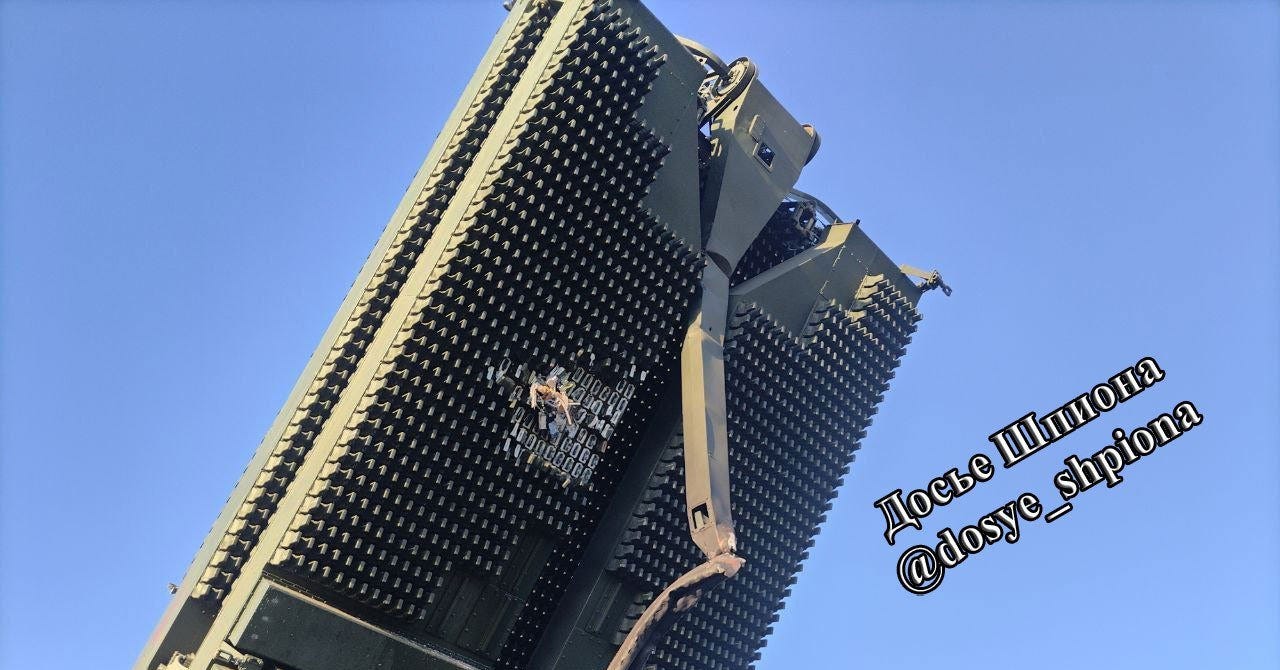Ukrainian Drones Blew Up a Radar in Crimea, Clearing the Way for a Dramatic Attack on Saki Air Base
But the sequenced raid and other deep strikes aren't helping outgunned Ukrainian brigades gain ground
Ukrainian drones and missiles are wreaking havoc on Russian forces in occupied Crimea. But it’s not clear the strikes will have any lasting effect. The Ukrainians lack the ground combat power to take advantage of any gaps the Ukrainian deep strike open in Russian defenses.
On Thursday night, drones struck Saki air base in western Crimea 100 miles from the front line in southern Ukraine’s Kherson Oblast. That overnight raid, which triggered a towering blaze at the base, came a little more than a week after drones hit a Russian S-400 surface-to-air missile battery in the same area, damaging the battery’s Big Bird search radar.
The attack on the S-400 may have cleared the way for the attack on Saki, which itself should temporarily suppress Russian air power in Crimea. The sequenced raids are part of a wider Ukrainian strike campaign that, on April 30 alone, knocked out 10 Russian artillery pieces, 55 vehicles, two boats some electronic warfare equipment and fuel storage and killed 79 Russians, according to the Ukrainian armed forces’ task force in Odesa.
But Ukrainian missiles and drones have been plucking at Russian forces in Crimea for years now without creating conditions for significant territorial gains.
The last successful Ukrainian counteroffensive in southern Ukraine ended in November 2022 as Ukrainian brigades rolled into Kherson City on the bank of the Dnipro River, pushing out battered Russian regiments that were exhausted after 10 months of offensive operations—and hadn’t prepared a layered defense against a Ukrainian counterattack.
A dozen Ukrainian brigades attempted a second counteroffensive in the south in June 2023, but got mired in the dense minefields reconstituted Russian regiments spent months preparing. The Ukrainians advanced a few miles at tremendous cost in people and equipment but eventually surrendered essentially all their gains as the Russians resumed their own attacks in late 2023
Bad design
The problem is operational, according to Ukrainian analysis group Frontelligence Insight. Ukrainian commanders oversaw deep strikes in Crimea last year without “linking those strikes to a specific follow-up operation that could have fully exploited the window they created.”
Sure, the raids frayed Russian defenses, suppressed Russian air power and drained Russian logistics. But did it matter if Ukrainian ground forces weren’t ready to attack the battered Russians—and gain and hold ground?
Ukraine’s allies share some of the blame for the lack of an overall operational design—in particular, the United States, which withheld long-range Army Tactical Missile Systems rockets in the lead-up to the 2023 counteroffensive, and then finally provided the 190-mile-range ATACMS after the counteroffensive had faltered.
Subsequent ATACMS raids in Crimea “spent significant resources, but did not link to any offensive or follow-on operation that year," Michael Kofman, a senior fellow in the Russia and Eurasia Program at the Carnegie Endowment for International Peace, told Frontelligence Insight.
Ongoing Ukrainian deep strikes in Crimea could, in concept, degrade Russian forces in ways Ukrainians brigades could exploit in order to gain ground. But only if those brigades are capable of offensive action. At present, they are not.
And that means the deep strikes are mostly for show.
Read more:
Russian Troops Infiltrated Pokrovsk—But Not for Long
For more than a year since capturing the ruins of Avdiivka in eastern Ukraine’s Donetsk Oblast, the 600,000-strong Russian army of occupation in Ukraine has had its sights set on one main objective: Pokrovsk, a city in Donetsk with a pre-war population of 60,000 that anchors a …







I'm just a civilian, but from playing enough strategy games, here's maybe a dumb take: Crimea is easy to attack - in range, and they have good enough intel. Assuming they're not wasting rare ammo on the attacks, continuing to degrade air cover makes sense, since Russia cannot give up on having coverage, since if it really goes away, Ukraine might be tempted to follow-up.
If they nowadays mostly waste domestically-produced drones, then it's as good as using them deep in Russia, plus Crime's sentimental value for Russia.